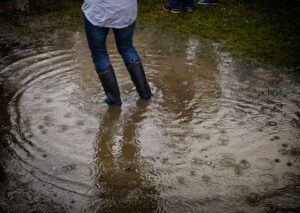A sewage backup is one of the most unpleasant things you can experience in your home. It can be incredibly scary and gross, but it’s also preventable if you take the right precautions. If you’re looking for tips on how to prevent a sewage backup, look no further! Here are some tips that will help keep your home safe from this unpleasant situation.
Why does this happen?
Sewage backups occur when there is an issue with your sewer system, such as broken pipes or clogged drains. When this happens, the sewage backs up into your house through sinks, tubs and toilets. Sewage backups are often caused by faulty plumbing or blocked drains. Other factors that contribute to this problem include:
- The build-up of grease and food particles in pipes due to improper disposal methods (such as pouring grease down the drain)
- Overflowing toilets caused by clogged drains or toilet malfunctions
- Heavy rains or flooding
- Cracked or damaged pipes due to age or improper installation
- Lack of backflow prevention devices
- Tree roots growing into your pipes
What to do if you experience a sewage backup
If you experience a sewage backup in your home, immediately turn off the water to prevent further damage. It’s also important to clean up the mess as soon as possible. Sewage can create lasting issues if not
addressed quickly, including structural damage, material damage, mold, stench, and bacteria. No one wants that.
How to prevent backups in the first place

- Make sure your toilet flapper is working properly. This little rubber ball attached to your toilet tank lid prevents water from running down into your septic system when you flush the toilet. If your flapper isn’t working correctly, it will let too much water into your pipes—and that excess water could lead to an overflow in your septic system.
- Have any cracks or holes in your sewer line inspected by a professional so they can be repaired before they become a problem. Better yet, have your pipes inspected by an experienced plumber frequently—every few years.
- Keep an eye on the level of water in your toilet tank! If there’s too much water stored up, it could mean that there’s too much pressure on the pipes leading out of the tank and into your house—which means more chance of a leak or overflow developing later on down the line (pun intended).
- Pay attention for leaky faucets and pipes. Not only is this costly and wasteful, it could be just the beginning of a bigger problem.
- Don’t use harsh chemicals or cleaners near your drains; they can actually cause more damage than good when used improperly! Instead, try using vinegar and baking soda together as a mild disinfectant solution that won’t harm your plumbing system when used properly (just make sure not to pour any down the drain).
- Avoid flushing items down the toilet that don’t belong. This may sound obvious, but it’s the number one reason for toilet backups.
We’ve all been there. Sewage backups are one of the many joys of home ownership. But that doesn’t mean we should have to experience this most unpleasant of challenges. Make sure to follow these steps to avoid the avoidable in the future, and if you do run into a sewage backup, make sure to give Flood & Fire Pros a call. We’re available 24/7 to help you stop the problem, clean up the mess, and get you back in business as quickly as possible.
